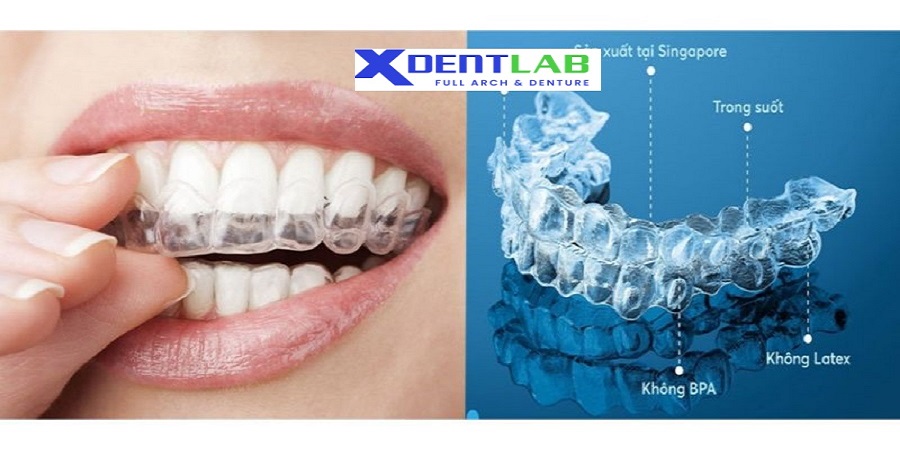
introduce International dental aligner manufacturing xdentlab.com . Dental aligners are a modern orthodontic solution designed to correct misaligned teeth and improve overall dental aesthetics. Unlike traditional braces, which consist of metal brackets and wires, aligners are custom-made, transparent trays that fit snugly over the teeth. Their discreet appearance has significantly contributed to their rising popularity among adults and teenagers alike. Many individuals prefer aligners over traditional braces due to their comfort and minimal visibility, allowing patients to achieve desired results without the social stigma sometimes associated with conventional orthodontic methods.
Introduction to Dental Aligners
introduce International dental aligner manufacturing . The technology behind dental aligners involves advanced 3D imaging and computer-aided design. Initially, a dental professional takes precise impressions or scans of the patient’s teeth, which are then used to create a digital representation of the dental arch. This data allows for a customized treatment plan, specifying the gradual movements of the teeth over time. Patients receive a series of aligners, each designed to transition the teeth incrementally towards the planned final position. This step-by-step approach not only enhances comfort but also enables patients to monitor their progress throughout the treatment.
The growing popularity of dental aligners can be attributed to various factors, including a surge in consumer awareness about orthodontic options and advancements in dental technology. Many people are now seeking less invasive and more visually appealing solutions for teeth straightening. Additionally, the convenience of removable aligners allows individuals to maintain better oral hygiene, as they can easily be taken out during meals and cleaning routines. As a result, the dental aligner market has expanded rapidly, leading to the emergence of numerous manufacturers and various product offerings tailored to diverse patient needs.
The Global Market for Dental Aligners
The global market for dental aligners has experienced significant growth in recent years, driven by an increasing demand for orthodontic treatments and advancements in dental technology. According to industry estimates, the market was valued at over USD 3 billion in 2022 and is projected to continue expanding at a compound annual growth rate (CAGR) of approximately 20% through the next few years. This growth has been primarily fueled by the rising awareness of aesthetic oral care solutions, particularly among adult patients seeking discrete treatments.
Must-read articles: Global contract manufacturing for clear aligners
Regional demand variations also play a crucial role in shaping the dynamics of the dental aligner market. North America currently holds the largest share, attributed to high disposable income, access to skilled dental professionals, and a preference for aesthetic treatments. Europe follows closely, where countries like Germany and the United Kingdom are witnessing increasing adoption of aligners as a preferred orthodontic solution. In contrast, the Asia-Pacific region is poised for rapid growth due to rising disposable incomes, expanding middle-class populations, and greater access to dental care. Countries such as China and India are emerging as significant players in the aligner market, encouraged by both increasing awareness and government initiatives promoting oral health.
Several major companies dominate the dental aligner manufacturing landscape, such as Align Technology, Inc. and Ormco. These organizations invest heavily in research and development to produce innovative aligner systems and tools to improve patient experience. Moreover, the introduction of the direct-to-consumer model has transformed the way people access orthodontic treatments, as patients increasingly opt for online consultations and aligner purchases. This shift in purchasing behavior is reshaping market strategies and intensifying competition among existing players.
In conclusion, the global dental aligner market is poised for continued expansion, driven by technological advancements and evolving consumer preferences. The increasing variety of products and growing competition among manufacturers will likely continue to enhance the availability and effectiveness of dental aligners worldwide.
Manufacturing Processes of Dental Aligners
The production of dental aligners has evolved significantly over the past decade, driven by advancements in technology and the growing demand for orthodontic solutions. At the forefront of these advancements are digital scanning, computer-aided design (CAD), and 3D printing, which together streamline and enhance the manufacturing processes of dental aligners.
The initial step in the manufacturing process involves digital scanning, where orthodontists capture a precise image of a patient’s teeth using an intraoral scanner. This technology offers a non-invasive alternative to traditional impressions, providing higher accuracy and comfort for the patient. The scanned images are then utilized to create a 3D model of the patient’s dental anatomy.
Following the scanning phase, the data is processed through sophisticated software applications that allow for customized treatment planning. Orthodontists use these applications to design a series of aligners tailored to the specific needs of each patient. The software calculates the appropriate movements required to gradually shift the teeth into their desired positions, ensuring effective and efficient treatment outcomes. This step highlights the role of advanced algorithms in optimizing orthodontic plans.
Once the design phase is complete, the next step involves the production of the aligners using 3D printing technology. Dental aligners are typically manufactured from high-quality polymers that offer both durability and flexibility. 3D printing allows for rapid production of aligners, significantly reducing wait times for patients. Additionally, this process minimizes material waste, contributing to more sustainable manufacturing practices.
In summary, the manufacturing processes of dental aligners integrate cutting-edge technologies such as digital scanning and 3D printing, enhancing the precision and efficiency of orthodontic treatments. As these technologies continue to evolve, the dental aligner industry is poised for further advancements, ensuring that patients receive more personalized and effective care.
Material Science Behind Dental Aligners
The production of dental aligners relies heavily on advanced materials science, particularly the use of thermoplastic materials. These materials are engineered to provide both the necessary flexibility and strength to ensure effective teeth movement. Thermoplastics, often preferred for aligners, have the distinctive ability to be reshaped by heat; this property allows for precise molding to the contours of an individual’s dental structure. Among the most commonly used thermoplastics are polyurethane and polyethylene, each offering unique benefits that enhance the aligner experience.
One of the critical attributes of these thermoplastic materials is their biocompatibility. Dental aligners come into direct contact with oral tissues, and thus, it is imperative that the materials are compatible with biological systems to prevent any adverse reactions. Biocompatible thermoplastics ensure that patients experience minimal discomfort, irritation, or allergic reactions during treatment. The emphasis on biocompatibility has spurred innovations in material formulations, creating aligners that not only fit well but also integrate seamlessly with the oral environment. This integration enhances the overall comfort and effectiveness of orthodontic treatment.
Recent advancements in material science have also contributed significantly to the transparency and durability of dental aligners. Manufacturers are focusing on developing materials that maintain optical clarity while withstanding the forces exerted during teeth movement. Innovations such as improved surface treatments prevent staining and scratching, thus ensuring that aligners remain aesthetically pleasing throughout the treatment duration. With advancements in production techniques and materials, the future of aligner therapy looks promising, paving the way for even more effective and comfortable solutions for orthodontic care.
Contact service home page : xdentlab.com
